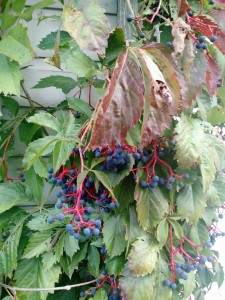Practice Circle: Autumn and Impermanence
 We’ve crossed the Equinox, and here in the northern USA where I live, the arrival of autumn is unmistakable. Green leaves dry and are touched with orange, red and gold. The evening turns cool and dark. Soon the lush profusion of life will give way to the barren cold of winter. It’s a very good time to contemplate impermanence.
We’ve crossed the Equinox, and here in the northern USA where I live, the arrival of autumn is unmistakable. Green leaves dry and are touched with orange, red and gold. The evening turns cool and dark. Soon the lush profusion of life will give way to the barren cold of winter. It’s a very good time to contemplate impermanence.
I’m taking a great online program on Coursera called “Tibetan Buddhist Meditation and the Modern World,” which, among a lot of other fascinating things, is delineating all the various kinds of contemplative practices of Tibet. The introductory course of meditation for all novices is the Ordinary Preliminary Practices, contemplations designed to inculcate the basics of Buddhist philosophy. One of the earliest of these is contemplation on impermanence, and I was reminded once again of how this deceptively simple understanding undergirds all the wisdom of the Buddhist path.
Impermanence is, ironically, the foundation of the Three Marks of Existence. Because everything in our experience is temporary and contingent on ever-changing conditions, nothing has a permanent, stable identity; from this insight the concept of not-self (anatta) can be derived. If things are not what they seem to be, and if even that which is dearest to us can’t last, then trying to seek comfort and satisfaction in conditioned things will inevitably lead to varying degrees of disappointment, anguish and despair (dukkha). The recognition that the Three Marks are the defining factors of human experience is in turn the foundation of the Four Noble Truths, the Eightfold Path, and everything else that Buddhism teaches.
For better or worse, impermanence is always available to our mindful awareness. We can start, if we like, with the constant change in the world around us. Where I live we have the poignant transformation of nature that we know will soon lead to the dark of winter. Where you live the transformations may be different, but you probably still observe more subtle changes of light and climate that mark the inexorable turn of the seasons.
From there we might turn our awareness to the people around us, how children grow and change, how they become adults and have children of their own, how their circumstances are subject to unpredictable change, including the inevitable vagaries of sickness, aging and death. And we can certainly see how our own bodies and lives change, and recognize the truth of impermanence in our own experience, moment by moment.
Contemplating impermanence may confront us with sadness and fear. But if we can abide in this awareness, we may come to see that the insight of impermanence can free us from our compulsion to cling to temporary things, and can allow us the profound relief of relaxing our grip on that which we can’t hold on to anyway. And it may help us remember how brief and precious is our own life, and that of everyone around us, and to open ourselves more deeply in kindness and compassion to the fragile humanity we all share.
This Sunday, September 27th, 2015, Practice Circle will gather to share a contemplation of impermanence for the Autumnal Equinox. If you’d like to join us, you can find out more here.
